
Fall for Dance
Morani/Mungu (Black Warrior/Black God) by Jamar Roberts, The Two of Us (Christopher Wheeldon), 18+1 (excerpts), Lamentation
★★★★✰
New York, City Center
20 October 2020, streamed through 1 Nov 2020
www.nycitycenter.org
On a Stage
It can be difficult to get excited about digital content these days when everything is digital. I confess the announcement of a virtual Fall for Dance did not fill me with glee. But tonight, during the first of two programs, I was reminded: good choreography and good dancers can transcend the screen. The two new works that premiered there, one by Jamar Roberts and the other by Christopher Wheeldon, might easily be translated to a live performance – in fact, I hope they will be when things return to normal, as they will one day.
All four pieces in this hour-long program (which also included Martha Graham’s Lamentation and excerpts from 18+1 by the Spanish choreographer Gustavo Ramírez Sansano) were filmed on the stage of New York City Center, a plus. Dancing outdoors is nice, but there’s nothing like a beautiful proscenium stage. Everything is lit as it should be, and there is that sense of looking in on a self-contained world, with its own atmosphere and temperature.
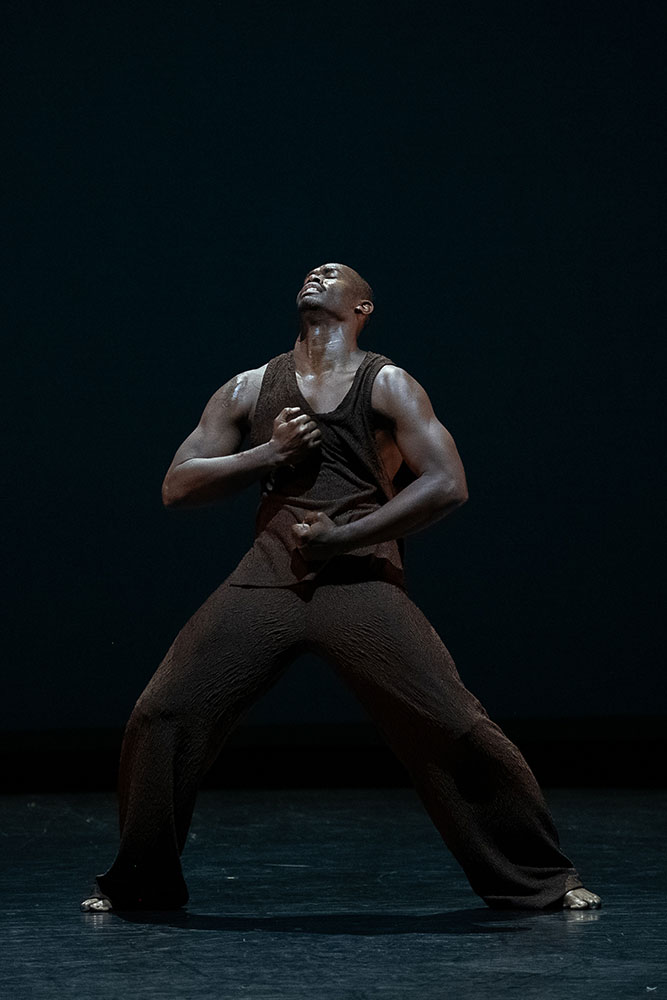
© Christopher Duggan. (Click image for larger version)
For the occasion, Roberts, who is the chorographer in residence at Alvin Ailey, created a solo for himself, Morani/Mungu (Black Warrior/Black God). This triptych was set to “Black Is,” by The Last Poets; followed by Coltrane’s “The Drum Thing”; ending with Nina Simone’s “You’ll Never Walk Alone,” for piano. Roberts is a monumental dancer, both in power and in intensity, but without a lick of self-aggrandizement. Much of the movement in the solo initiates from his arms, shoulders, and back: he twists, reaches, bends, revolves. The arms lead, creating a music and geometry of their own. The music seems to pass through him, making waves, sending electric currents through his limbs. At some point, the solo begins to feel like an exorcism, until, accompanied by the music of Nina Simone, a feeling of serenity and order – not mawkish or sentimental – returns to his body, and our breathing returns to its normal rhythm. Roberts told me earlier this summer that he had struggled with feelings of hopelessness after the killing of George Floyd. One senses powerful, but controlled, emotions coursing through this piece.
I was surprised by just how well this solo read on a screen; it was undoubtedly well shot by the team at Fall for Dance, as all the pieces were. I was even more surprised by how moved I was by the final piece on the program, Wheeldon’s The Two of Us, for Sara Mearns and David Hallberg. The two are longtime friends but have never danced together. Both have worked with Wheeldon before. There was clearly chemistry in the room when they were making these solos and pas de deux, set to four extraordinary, wistful songs by Joni Mitchell. (“I Don’t Know Where I Stand,” “Urge for Going,” “You Turn Me On, I’m a Radio,” and “Both Sides Now.”) Something in this process seems to have freed them all; I’ve never seen a more sincere, open-hearted, grounded work from Wheeldon. Or such natural performances from these dancers, particularly Hallberg. It’s hard even to remember steps, because everything feels so organic. The dancers look like themselves, moving not so much with but through the music, feeling its vibe, letting themselves be carried away by it the way a normal person might while listening to the radio.

© Christopher Duggan. (Click image for larger version)
It begins with Mearns, in a loose jumpsuit, hair down, touching her fingers together very delicately. The rest of her solo is like a soliloquy, a daydream. There’s barely a ballet step in there. Hallberg’s solo is only slightly more balletic, with a little arabesque here, a short sequence of chainé turns there. Both seem to be lost in the music, and in Mitchell’s words, which speak of memory, and California, and longing. The punctiliously musical Wheeldon has given them movements that are free and loose, not too tied to the rhythms, with a bit of a groove. He has released his inner hippie.
When the two dancers finally come together, in “Both Sides Now,” they walk toward and away from each other, pivot their feet, and slide their arms past each other. Utterly missing are the usual Wheeldonian advanced partnering techniques for which he is so well known. Because of this, every contact seems to matter twice as much. The most dramatic moment comes in an embrace in which Mearns raises one leg while arching her back in Hallberg’s arms. The moment feels utterly genuine, heart-catching. I found myself holding back tears.
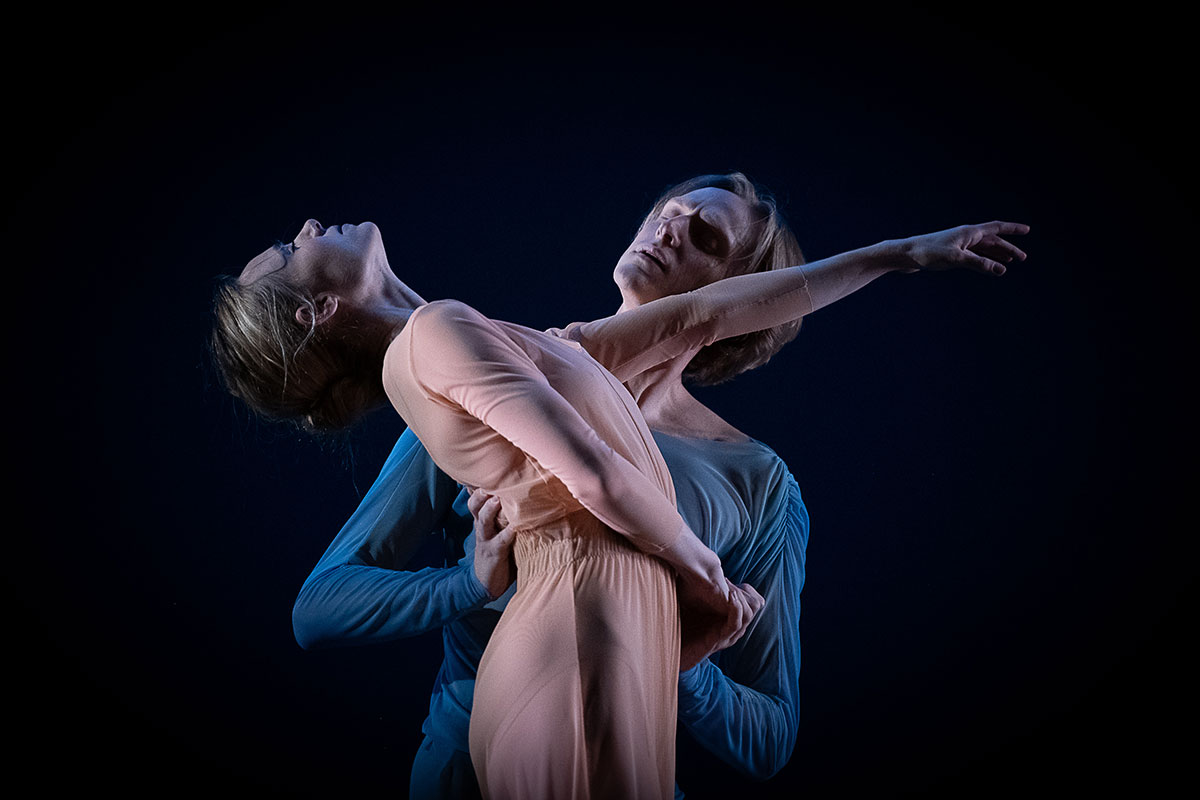
© Christopher Duggan. (Click image for larger version)
If the rest of the program was less gripping, that’s par for the course at Fall for Dance, where every program is mix and match. The excerpts from Sansano’s 18+1 felt arch and colorless. Graham’s Lamentation is too often performed, and has come to feel like a historical artifact. Maybe someone will shake it up one of these days, but it hasn’t happened yet.
But The Two of Us and Morani/Mungu are more than enough. They reminded me of what I love in dance: the way watching a person move on a stage, to music, can stir something deep inside of you, something you didn’t know was there.












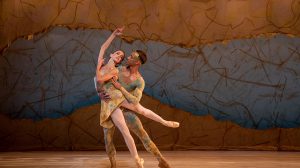


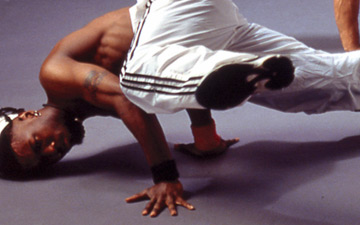
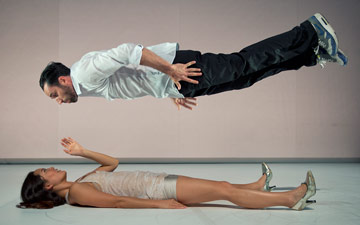
You must be logged in to post a comment.